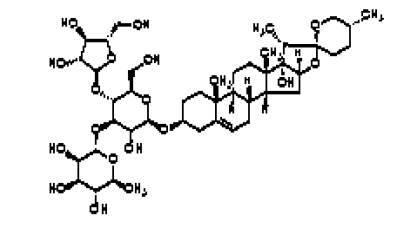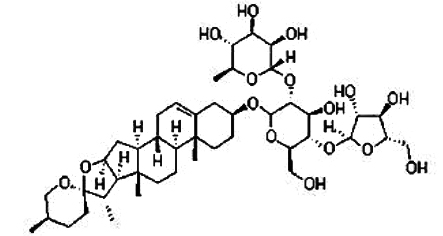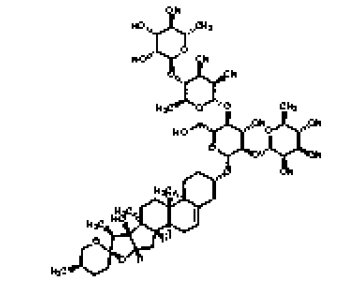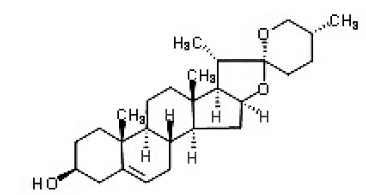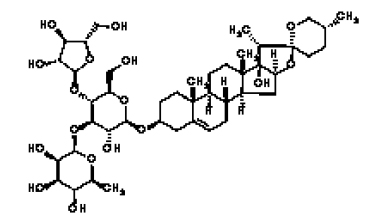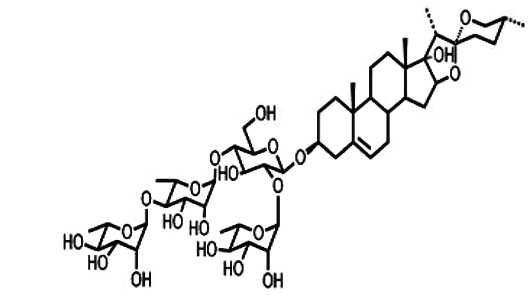



>
The Eastern Himalayan illustration
The Himalayas encompass a chain of parallel and converging ranges which makes it the supreme mountain region of the world and among its peaks Mount Everest (8,848 m) is the highest mountain in the world. Due to its enormously active geodynamic conditions even slight alterations in the geo ecology of this area can cause severe changes in the environment that may lead to unsettling consequences (Valdiya, 2001). The Indian Himalayan Region (IHR) which extends up to 250 - 300 km across, stretches over 2.5 km from Jammu & Kashmir in the west to Arunachal Pradesh in the east. It spreads between 21°57' - 37°5' N latitudes and 72°40' - 97°25' E longitudes. The entire IHR is divided into two agro climatic zones, viz. Zone I comprising of the Western Himalayan region and Zone II comprising of the Eastern Himalayan region. The Eastern Himalayan region also comprises of Central Nepal, Sikkim, China, South-east Tibet, North Bengal and Bhutan and is declared as global Biodiversity hotspot (Myers, 2000). About 70% of species diversity has been reported from the two Indian Biodiversity hotspots-The Western Ghats and the Eastern Himalayas and these hotspots are protected by tribal communities and their ancient Traditional Knowledge (TK) system (Karthi kiyan, 2000).
The North East India (NEI) acts as a refuge to 8 million tribal populations belonging to 150 tribal communities which have diverse and magnificent ethno-cultural heritage. According to the statistics of a few studies, about 1953 ethno-medicinal plants are detailed from the NE region of which 1400 species are employed both as food and ethno-medicinal resources (Albert and Kuldip, 2006; Dutta and Dutta 2005). Arunachal Pradesh, one of the eight states of the NEI covers an area of 83,743 sq.km. An extensive along with an intensive plant collection and survey work was initiated in the state after the reorganization of the Botanical Survey of India in 1955. The state has the richest forest coverage (68%) including precious heritage of flora and fauna belonging to both ecological and ethnobotanical significance and thus falls within the Himalaya Biodiversity hotspots (Hegde, 2002). Such diversity is attributable to the presence of all known climatic zones from Tropical to snow-clad alpine mountains (Kala 2005). 33% of higher plants and 52% of Orchid species of India are found in the forest of Arunachal Himalayas (AH) (Hegde, 2002; Tag et al., 2008). The AH region shelters 26 major tribes and 110 sub-tribes with rich tradition of age-old native knowledge system (Tag and Das, 2004).
There are plenty of literatures based on ethnobotanical scenario from all the states of North East India but only a few dependable literatures on quantitative disease specific ethnopharmacology reliable on precise methodology are available till date (Nima et al., 2009). The mega diverse countries like India and China are reported to have more than 8000 - 5000 years of continuous cultural history and TK. The traditional phytomedicine has the merit over modern allopathic counterpart as the system is verified by ancient traditional and cultural knowledge; other merits are being cheap, lesser side effect, affordability and entirely of a botanical origin (Fabricant and Farnworth, 2001; Patwardhan, 2007). Dose formulation of phytomedicine is suitable based on pragmatic knowledge of TK holders, but need validation in modern laboratory (Jain, 1999; Tag et al., 2008). There are two major approaches to drug discovery; 1. Common approaches which includes Serendipity and Synthetic approach, Chemical Biology approach, and Combinatorial and Genomic approaches which usually takes about 8 - 10 years to isolate the novel unit of the plant. 2. Conversely, current innovative approaches based on Traditional Medicine are- Reverse Pharmacology Approach, Ethnopharmacology Approach, Personalized Approach and Systems Biology Approach which often takes about 4 - 5 years to isolate the novel entity (Tag et al., 2013).
Indian and Chinese custom of agricultural, science, and medicinal practices are yet considered to be time consistent which need firm Intellectual Property Rights (IPR) regulations to protect the rights of the indigenous communities (Tag et al., 2013). Traditional plant-based medicinal products need validation at different stages of pharmacognosy research. This is yet another major focus area where the government should deputize academic and research institutes of the region. Recognizing IPR of TK holders by adhering to the Convention on Biological Diversity (CBD) guidelines have not yet been realized in the NEI (Tag et al., 2013).
The temperate genus
Out of several different species,
>
The species Paris polyphylla
The global distribution of
1. Paris polyphylla var. Smith Himalaya to China 36 South Central China (CHC) China North Central (CHN), China Southeast (CHS), China Tibet (CHT), 38 Eastern Asia, Taiwan (TAI) 40 Indian subcontinent, Assam (ASS), Indian subcontinent, East Himalaya (EHM), Indian subcontinent, nepal (NEP) Western Himalaya (WHM) 41 Indo China, Laos (LAO), Indo China, Myanmar (MYA), Indo China, Thailand (THA), Indo China, Vietnam (VIE).
2. Paris polyphylla var. polyphylla Himalaya to China 36 South Central China(CHC), North Central (CHN), China Southeast (CHS), China Tibet (CHT), 38 Eastern Asia, Taiwan (TAI) 40 Indian subcontinent, Assam (ASS), Indian subcontinent, East Himalaya (EHM), Indian subcontinent, Nepal (NEP) Western Himalaya (WHM) 41 Indo China, Myanmar (MYA), Indo China, Thailand (THA), Indo China, Vietnam (VIE).
3. Paris polyphylla var. yunnanensis SE. Tibet to SC. China 36 South Central China (CHC), China Tibet (CHT) 40 Indian subcontinent, Assam (ASS), Indian subcontinent, East Himalaya (EHM),41 Indo China, Myanmar (MYA).
4. Paris polyphylla var. chinensis S. China to Indo-China, Taiwan 36 South Central China(CHC), China Southeast (CHS), 38 Eastern Asia, Taiwan (TAI) 41 Indo China, Laos (LAO), Indo China, Myanmar (MYA), Indo China, Thailand (THA), Indo China, Vietnam (VIE).
5. Paris polyphylla var. nana China (S. Sichuan) 36 South Central China(CHC).
6. Paris polyphylla var. alba SC. China 36 South Central China (CHC).
7. Paris polyphylla var. stenophylla Nepal to C. China 36 South Central China (CHC) North Central (CHN), China Southeast (CHS), China Tibet (CHT), 38 Eastern Asia, Taiwan (TAI) 40 Indian Subcontinent, Assam (ASS), Indian subcontinent, east himalaya (EHM), Indian Subcontinent, Nepal (NEP) Indo China, Myanmar (MYA).
8. Paris polyphylla var. paxiensis China (Sichuan) 36 South Central China (CHC).
In Nepali folkculture, rhizomes of
The dried rhizome of
It has frequently played a significant role in clinics for treating fractures and immunity adjustment and aprotitis, analgesia, tumours, and bleeding (Zang et al., 2010). Also it plays a significant role in antifertility, malady, and spermicidal enhancement and sedative (Cheng et al., 2008) Gongxuening capsules have been extensively used for more than a decade and are commercially accessible in most cities in China (Pande et al., 2007). Typically, this patent medicine is used to cure female patients who suffer from menorrhagia, metrorrhagia, metrostaxis, functional uterine bleeding and chronic pelvic inflammatory 328 X.X. diseases (Guanglie et al., 2013).
The herbarium catalogue from the Royal Botanical Garden Edinburgh exhibited herbarium for some of the varieties of
1. Paris polyphylla Sm. var. polyphylla; Collector/Expedition: Cavalerie, Pierre Julien. Collection Number: 533; Collection Date: 24 September, 1902; Filling region: Inner China, Korea and Taiwan; Country of Origin: China; holotype of Paris debeauxii H. Lev. Barcode: E00346110. 2. Paris polyphylla Sm. var. stenophylla Franch; Collector/Expedition: Maire, E.E. Collection Number: S.N; Collection Date: May, 2009; Filling region: Inner China, Korea and Taiwan; Country of Origin: China; holotype of Paris hamifer H. Lev. Barcode: E00346106. 3. Paris polyphylla Sm. var. yunnanensis (Franch.) Hand.-Mazz. Collector/Expedition: Bodinier, Emile M. Collectio n Number: S.N; Collection Date: May, 2009; Filling region: Inner China, Korea and Taiwan; Country of Origin: China; holotype of Paris christii H. Lev. Barcode: E00346 104. 4. Paris polyphylla Sm. var. yunnanensis (Franch.) Hand.-Mazz. Collector/Expedition: Cavalerie, Pierre Julien. Collection Number: 1310; Collection Date: 13 June 1902; Filling region: Inner China, Korea and Taiwan; Country of Origin: China; holotype of Paris cavalerie H. Lev. Barcode: E00318494. 5. Paris polyphylla Sm. var. yunnanensis (Franch.) Hand.-Mazz. Collector/Expedition: Cavalerie, Pierre Julien. Collection Number: 729; Collection Date: 23 November 1902; Filling region: Inner China, Korea and Taiwan; Country of Origin: China; holotype of Paris gigas H. Lev & Vaniot. Barcode: E00346105. 6. Paris polyphylla Sm. var. yunnanensis (Franch.) Hand.-Mazz. Collector/Expedition: Bodinier, Emile M. Collection Number: 1635; Collection Date: 17 July 1898; Filling region: Inner China, Korea and Taiwan; Country of Origin: China; holotype of Paris mercieri H. Lev & Vaniot. Barcode: E00346107. 7. Paris polyphylla Sm. var. yunnanensis (Franch.) Hand.-Mazz. Collector/Expedition: Maire, E.E. Collection Number: S.N; Collection Date: 17 July 1898; Filling region: Inner China, Korea and Taiwan; Country of Origin: China; holotype of Paris atrata H. Lev & Vaniot. Barcode: E00346103. 8. Paris polyphylla Sm. var. yunnanensis (Franch.) Hand.-Mazz. Collector/Expedition: Cavalerie, Pierre Julien. Collection Number: 2023; Collection Date: 05 June 1907; Filling region: Inner China, Korea and Taiwan; Country of Origin: China; holotype of Paris pinfaensis H. Lev & Va niot. Barcode: E00318495. 9. Paris polyphylla Sm. var. yunnanensis (Franch.) Hand.-Mazz. Collector/Expedition: Cavalerie, Pierre Julien. Collection Number: 3023; Collection Date: 25 June 1907; Filling region: Inner China, Korea and Taiwan; Country of O rigin: China; holotype of Paris aprica H. Lev & Vaniot. B arcode: E00318500. 10. Paris polyphylla Sm. var. yunnanensis (Franch.) Hand.-Mazz. forma velutina H. Li & Noltie. Collector/Expedition: Kunming, Edinburgh, Gothenburg Expedition (1993). Collection Number: 304; Collection Date: 26 May 1993; Filling region: Inner China, Korea and Taiwan; Country of Origin: China; holotype of Paris polyphylla Sm. var. yunnanensis (Franch.) Hand.-Mazz. forma velutina H. Li & Noltie. Barcode: E00346102.
The chemical constituents of
In 2005, Devkota isolated 6(six) compounds from
These compounds are:
a) Saponin-1 (Diosgenin-3-O[α-Lrhamnopyanosyl (1Rha-2Glu)-α-Lrhamnopyranosyl(1Ara-4Glu)]-β-DGlucopyranoside) which has a steroidal skeleton (Fig. 4). b) Polyphyllin C (Diosgenin-3-O[α-L rhamnopyanosyl(1-3)- α-D-glucopyranoside) which has a steroidal skeleton c) Polyphyllin D (Diosgenin-3-O[α-Lrhamnopyanosyl (1Rha-2Glu)- α –Larabinofuranosyl(1Ara-4Glu)]-β-DGlucopyranoside) which has a steroidal skeleton (Fig. 1). d) Przewalskinone B (1,5-Dihydroxy-7-methoxy-3-methylanthraquinone) which has a anthraquinone skeleton e) Stigmasterol which is a steroid, and f) Stigmasterol-3-O- β -D-glucoside.
12 steroidal saponins from
New saponins-polyphyllin A-H has been isolated from the rhizome of
Huang et al in 2007 extracted a novel steroidal saponin together with the 12 known compounds from
1. diosgenin (Fig. 5)., 2. pennogenin, 3.diosgenin-3-O-a-L-rhamnopyranosyl(1→2)-b-D-glucopyranoside, 4.pennogenin-3-O-a-L-rhamnopyranosyl(1→2)-b-D-glucopyranoside, 5.diosgenin-3-O-a-L-rhamnopyranosyl(1→2)[a-L-arabinofuranosyl(1→4)]-b-D-glucopyranoside, 6.pennogenin-3-O-a-L-rhamnopyranosyl(1→2)[a-L-arabinofuranosyl(1→4)]-b D-glucopyranoside, 7.diosgenin-3O-a-L-rhamnopyranosyl(1→2)-[b-D-glucopyranoside(1→3)]-b D-glucopyranoside, 8.diosgenin-3-O-a-L-rhamnopyranosyl(1→4)-a-L-rhamnopyranosyl(1→4)[a-L-rhamnopyranosyl(1→2)]-b-D-glucopyranos ide, 9.pennogenin-3-O-a-L-rhamnopyranosyl(1→4)-a-L-rhamnopyranosyl(1→4)[a-L-rhamnopyranosyl(1→2)]-b-D-glucopyranoside, 10.3-O-a-L-arabinofuranosyl(1→4)[a-L-rhamnopyranosyl(1→2)]-b-D-glucopyranoside-b-D-chacotriosyl-26-O-b-D-glucopyranoside, 11.2b,3b,14a,20b,22a,25b hexahydroxycholest-7-en-6-one, and 12.2b,3b,14a,20b,24b,25b hexahydroxycholest- 7-en-6-one.
Recently, a rapid and specific LC-MS-MS technique was developed for the analysis of polyphyllin I (Fig. 6)., polyphyllin II, polyphyllin VI and polyphyllin VII in the plasma of beagle dog after oral administration of Rhizoma Paridis extracts (RPE), which had recovery, precision , high sensitivity, accuracy and reproducibility (Yina et al., 2013).
In a study conducted in 2011, the content of mineral elements (Ca, Cr, Cu, Fe, K, Mg, Mn, Na, and Zn) in
Cervical cancer is considered to be the third most common type of cancer in women and was responsible for 275,000 deaths in 2008 (Ferlay et al., 2008). Despite of techniques such as neoadjuvant chemotherapy, platinum-based anticancer agents, represented by cisplatin, which have therapeutic properties, the survival rate has not improved in case of cervical cancer. Toxicities, including leukopenia, myelosuppression, neurotoxicity, ototoxicity, and nephrotoxicity (Alderden et al., 2006; Boulikas et al., 2007) may restrict their long-term use. In a recent study, the mechanism involved in the cytotoxic effects of a particular steroidal saponins from Chonglou (Rhizoma Paridis Chonglou), namely, Paris saponin VII (PS VII) (Fig. 3), alongwith its antitumor properties on Hela cell lines was tested. The results showed that PS VII inhibited the growth of the cell effectively. PSVII also upregulated cleaved caspase-3, cleaved caspase-9, and Bax expression in Hela cells. These results indicated that PS VII may have potentials in the cure of cervical cancer (Zhang et al., 2014).
Cell apoptosis is directly related to the incidence, development and metastasis of tumors (Aneja et al., 2008; Kim et al., 2008, Hung et al., 2008). The methods of apoptosis in tumor cells is a significant field of study for treatment of tumor and molecular cancer biology (Sutter et al., 2006).The progression of cells in the course of the cell cycle is powered by the sequential activation and inactivation of a family of serine-threonine kinases called the cyclin-dependent kinases (CDKs). Particularly, CDK1 controls progression from the S phase through G2 and into the M phase. Likewise, progression from the G1 to S phase is managed sequentially by CDK4/6 and CDK2. CDK activity is synchronized by binding to cyclin partners and the act of endogenous inhibitory peptides (Morgan et al., 1995; Norbury et al., 1992). The recognition of strong and selective cyclin dependent kinase inhibitors is the main concern for anti-cancer drug discovery.
PCD or
Polyphyllin D is a major steroidal component derived from Polyphyllin D and dioscin evade drug resistance and generate apoptosis in liver cancer HepG2, R-HepG2, cells (Cheung et al., 2005; Deng et al., 1999; Gao et al., 2011; Li et al., 2001).
Zhu et al., 2011 showed that B-ecdysterone and three other compounds having the same steroidal saponin moiety were isolated from
Lung cancer is reported to have become one of the chief causes of cancer related mortality all over the world of which non small cell lung cancer (NSCLC) represents 80% of lung can cers (Sordella et al., 2004; Workman 2004). Epidermal growth factor (EGFR) is a major therapeutic target in NSCLC (Kobayashi N et al., 2012). Patients having somatic mutations of the kinase domain of EGFR usually react to tyrosine kinase inhibitor (TKI) therapy, though often show progressive disease following 6 8 months of therapy (Jackman et al., 2006; Riely et al., 2006). Radiotherapy is tremendously important for patients with NSCLC who cannot go for surgery and patients who have experienced chemotherapy or TKI therapy failure. Nevertheless, NSCLC cells are normally less sensitive to radiotherapy when compared to SCLC cells, which results in radiotherapy failure (Riely, 2002). Even then radiotherapy leads to serious side effects, which includes irradiation pneumonitis and also a repressed hemopoietic system. In recent decades, focus has been made on identifying biologically vigorous cancer therapeutic agents obtained from natural resources (Grabley and Thiericke, 1999). Paris saponins (PSI), mainly from
The results of
It was established in a study conducted a few years back that treatment of MCF-7 and MDA-MB-231 cells with polyphyllin D results in the reticence of viability and initiation of apoptosis, with an IC50 of 5 microM and 2.5 microM, respectively, shown after 48h of incubations. It was evidenced by the formation of a hypodiploid peak in the cell cycle analysis, phosphatidyl-serine externalization, incidence of DNA fragmentation and a late loss of membrane integrity. The mechanism of action suggests that polyphyllin D dissolves the mitochondrial membrane potential, encourages a down-regulation of anti-apoptotic Bcl-2 expression and an up-regulation of pro-apoptotic Bax expression, and triggers caspase-9. Such results imply that polyphyllin D brings out apoptosis through mitochondria dysfunction. In vivo intravenous injection studies revealed that daily administration of polyphyllin D (2.73 mg/kg body weight) through ten days in nude mice bearing MCF-7 cells efficiently lessened tumor growth for 50% in conditions of tumor weight and size, and shows no significant toxicity in liver and heart to the host. These findings impart original insights that polyphyllin D could operate as a candidate in breast cancer treatment (Lee et al., 2005).
Loss of synapses and Neuritic atrophy cause the pathogenesis of Alzheimer’s disease (AD) and are situated upstream of neuronal death in the Ab cascade (Dickson and Vickers, 2001; Terry et al., 1991). The dysfunction of synapses and neurites is the exact cause of the memory deficit in AD. As neurons having atrophic neurites may continue to be viable and also have the ability to be remodeled, the vital event for the attainment of revival of brain function after injury is the renovation of neuronal networks, including synaptic reformation (Tohda et al., 2005) and neurite regeneration. Diosgenin, a steroidal saponin has several biological effects. A diosgenin derivative, caprospinol (diosgenin 3-caproate) has been reported to reduce amyloid deposits and also to improve memory dysfunction in Ab1-42-infused AD model rats (Lecanu et al., 2010). A recent study showed that diosgenin administration increased the object detection memory deficit in 5XFAD mice. Diosgenin administration reduced several signs of neuronal degeneration, which includes presynaptic disintegration combined with amyloid plaques in the cortex, axonal degeneration associated with amyloid plaquees in the cortex, hippocampus and cortex and PHF-tau express ion associated with and distal to amyloid plaques in the cortex and hippocampus. In addition, amyloid plaques were decreased by diosgenin treatment. The amyloid plaque reducing effect of diosgenin results in the hyperphosphorylation and the safety of axonal degeneration of tau. Thus, diosgenin may add to axonal extension in a direct pathway, and also through the amyloid plaque-lowering pathway (Tohda et al., 2012).
Abnormal uterine bleeding (AUB) is one of the major fields of concern for gyenocologists worldwide. Approximately one-third of all gynecological consultations are carried out for AUB which rises to 70% in women premenopause and postmenopause (Oehler et al., 2003). This consists of both dysfunctional uterine bleeding, which can be anovulatory or ovulatory, plus bleeding due to structural causes, including polyps, fibroids, pregnancy complications and endometrial carcinoma (Ely et al., 2006). Additionally, AUB can also result from contraception (Schrager, 2002). Because of the high morbidity, therapy of AUB is much important for women’s healthcare. In search for definitive cure, treatments like hysterectomy and drugs like combinations of estrogen and progestin, progestins, plasminogen inhibitors, such as tranexamic acid and prostaglandin synthetase inhibitors are commonly used. Total steroidal saponins of
Reactive oxygen species (ROS), like hydroxyl radicals (OH•), superoxide anion (O2•-), hydrogen peroxide (H2O2), and singlet oxygen (1O2) play a chief role in the advancement of oxidative stress which leads to many illnesses including diabetes, cardio vascular diseases, degenerative diseases, inflammation, anemia, cancer and ischemia (Cai et al., 2004). Synthetic antioxidant agents come with drawbacks such as lack of availability, high cost, and side effects. Plant based antioxidant compounds due to their inability to cause side effects (Cai et al., 2004; Dragland et al., 2003) play a defensive part by averting the production of free radicals and therefore are enormously valuable to lessen the diseases initiated by oxidative stress (Akinmoladun et al., 2010; Özen et al., 2010). In addition to anti-oxidant property the phenols and flavonoids act as brilliant anti-inflammatory agents (Talhouk et al., 2007; Zhang et al., 2011) against pro-inflammatory molecules such as TNF-alpha, NO etc. These molecules also causes tissue damage and cell death as NO can retort with the free radicals such as superoxide to generate peroxynitrite, that leads to irreversible injury to cell membranes (Lee et al., 2005; Wang et al., 2004). Many plants belonging to TCM along with
The antifungal test of compounds from
The roots of
The plant extract of
>
Tyrosinase inhibitory activity
Tyrosinase (EC 1.14.18.1) is a multifunctional enzyme containing copper which is widely dispersed in plants and animals. It performs like a catalyst in the oxidation of monophenols, o-di phenols, and o-quinones which is also a vital enzyme in melanin biosynthesis in plants and animals. Thus, tyrosinase inhibitors can be clinically functional for the cure of some dermatological disorders which are associated with melanin hyper-pigmentation. These are also useful in cosmetics for de-pigmentation after sunburn and whitening. Furthermore, tyrosinase is involved in the molting procedure of insects and adhesion of marine organisms (Shino et al., 2001).
The extracts, compounds and fractions of
Leishmaniasis is a parasitic disease which is caused by the attack of intracellular parasite known as Leishmania in the reticulo-endolethial system of the host. They are transmitted from host to host by the bite of a vector sand fly (Ram et al., 1996). It is considered to be one of the most dreadful diseases and is a major health problem of tropical, subtropical, and Mediterranean regions (Berman, 1998). The disease is classified on the basis of visceral (kalaazar), symptomatology as cutaneous, mucosal or micro cutaneous and diffused cutaneous. No safe and efficient vaccine is yet available for leishmaniasis and thus chemotherapy is the lone means of controlling the disease.
The extracts, compounds and fractions of
The presence of glucoside moieties of diosgenyl saponins is needed for the commencement of immunological reactions, particularly during the period of oxygen expenditure such as in the process including microbial activity and inflammation although diosgenin could only stimulate the macrophages phagocyte sis including elimination of foreign or denatured matter (Zhang et al., 2007).
Apart from such major uses, the rhizome of
The haemostatic activity of the rhizome of
Proteomics made a major contribution to the mechanistic investigation of TCM mixtures or decoctions. It was reported in 2008 that the total saponin of the rhizomes of
In natural environment, the internal tissues of most TCM plants including
The chromosomal number of





